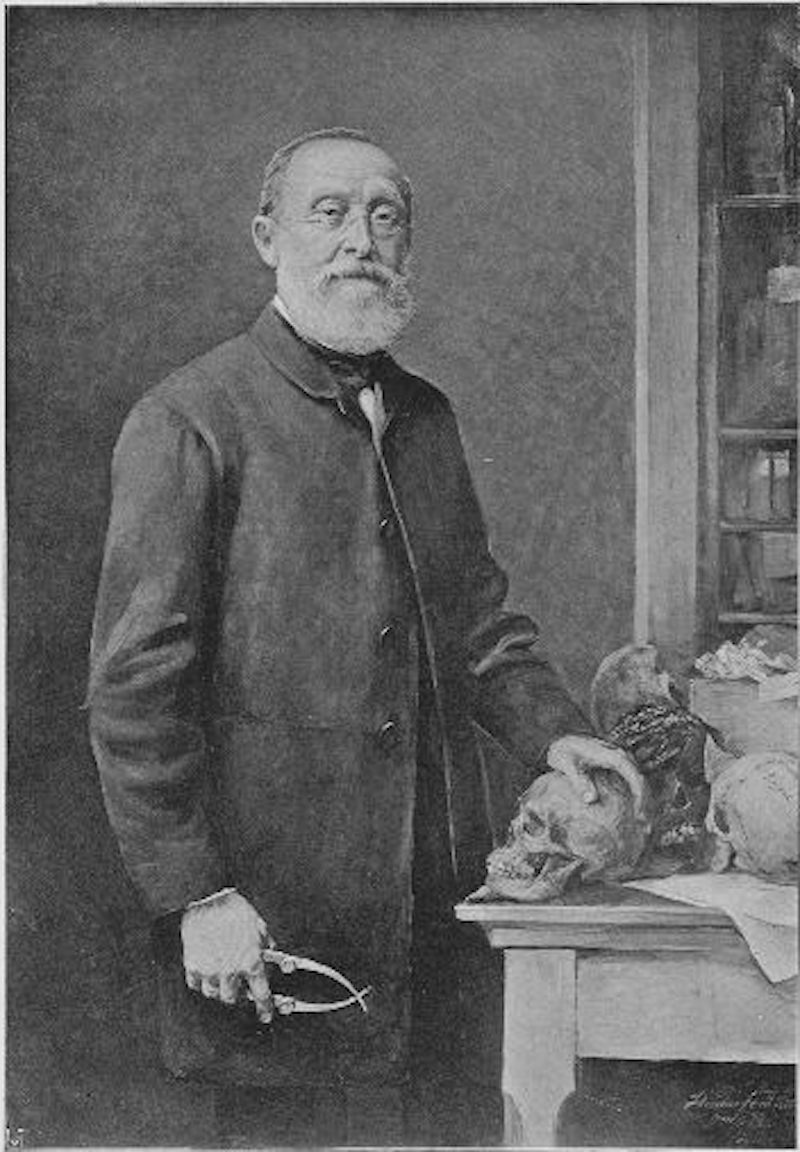Source

Source: Hanns Fechner, Portrait of Rudolf Virchow, etching, 1891. University Library Würzburg
Rudolf Virchow (1821-1902) was one of the most famous German scientists of the Wilhelmine era. He is credited with discovering leukemia and formulating the theory that cells originate from other cells (Omnis cellula e cellula). He was one of the pioneers of social medicine, contending that individual health could only be improved through the advancement of the well-being of the entire population. As a leader of the left-liberal Progressive Party, he opposed many of Bismarck’s policies and became a critic of the antisemitic right in the 1890s.
However, this portrait of Virchow points to another, problematic aspect of his scientific work. In addition to medicine, Virchow was also interested in biological anthropology. He worked closely with Carl Hagenbeck, the organizer of “Völkerschauen” (commercial exhibitions of "exotic" peoples from various parts of the world), in order to conduct anthropological research on the indigenous people exhibited there and to measure their skulls, for example. With the help of explorers and colonial officials, he also created his own collection of skeletons and skulls from around the world.

Source: Hanns Fechner, Portrait of Rudolf Virchow, etching, 1891. University Library Würzburg
UB Würzburg